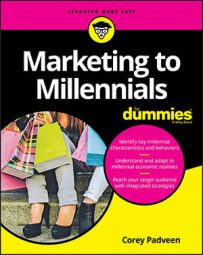When it comes to Millennial marketing, certain components are unique. The unique aspects of Millennial marketing strategies are a result of the new norms that buyers expect to encounter in the buying journey.
Creating a seamless content experience
You need to identify your brand’s persona target at every touchpoint in the customer journey. A clearly identifiable piece of content that highlights your brand will increase the likelihood that your Millennial audience will notice you.Here are a few important points to remember when trying to create your seamless content experience:
- Standardize your message. Your audience should be able to instantly recognize your content. You can help this recognition along in quite a few ways. One of the most important ways is through the consistency of your message. Though the message you share may change from one platform to the next, the way in which it’s expressed should remain largely uniform. Normalizing your message ensures that your Millennial audience is more likely to recall the content from one platform to the next. Repetition and a mid to high message frequency is necessary before your audience responds to your call-to-action.
- Maintain a standardized color scheme. Just as your message should be standardized, the colors you use in your creative design should match from one medium to the next. This standardized color scheme will help your audience recognize your content as they move across platforms.
- Highlight your call-to-action. Your call-to-action should be front and center and differentiate itself from the rest of your content. In every place that your message is being shown, your call-to-action must stand out. Calling it out may mean highlighting it with a sticker or starburst, using a button available in one of your ad campaigns, or using a different color, font, and size to make it clear that you’re asking your audience to take some sort of action.
One of the worst mistakes you can make is blending your call-to-action into the creative design or post. In the few brief moments that Millennials give to your content, you want the request you’re making to pop out from everything else.
Personalizing the content experience for Millennials
In addition to creating content that flows and clearly matches your brand, you want to focus on personalization whenever possible. In general, most of the campaigns that focus on the same message or call-to-action allow for limited hypertargeted personalization. However, email or targeted advertising allows you to more closely tailor the elements of your campaign to the targeted audience’s characteristics.Tailoring a campaign means that you can adjust your content or messaging to appeal to the interests and behaviors identified within certain segments of your audience. In some cases, personalization can go as far as tailoring a message to an individual. Following are some cases that allow for greater personalization:
- Social advertising: One of the greatest benefits of social advertising is the ability to tailor your content to specific, targeted groups in your advertising dashboards. This ability is particularly true when it comes to Facebook and Twitter. Their tools have the capability to build audiences, analyze them, and then create ad content specifically designed to target the identified characteristics. While your personalization techniques are limited to tailoring your message to the qualities of certain pockets, the ability to analyze those segments is unparalleled. After you develop an understanding of your audience, you can create several sets of content that are designed to capture the attention of a specific segment.
- Email: You can customize your email both individually and at the segment level. Modern email clients, such as Constant Contact or MailChimp, offer the ability to tailor your subject line and parts of your message to the individual. Of course, you’ll also want to create emails that are designed to engage users based on the list they have subscribed to or the platform on which they subscribed. Going a step further and personalizing the message with a subscriber’s name and perhaps some information that is unique to them (something you can’t do automatically using email client features) will impress your Millennial audience.
- Search remarketing: Search engine marketing and paid advertising on display networks is a great way to drive both action and brand recognition. Remarketing uniquely personalizes the ad experience by pushing the content that users have already viewed on your website back to them as they peruse third-party websites.
For example, if a visitor landed on a particular product page on your website, a remarketing campaign can prompt a customized ad with tailored messaging and the product in question to follow the user around the web. This remarketing campaign keeps your brand top of mind, even if the user doesn’t click-through on the ad. Brand recognition is an important factor to consider in the buying process, and remarketing is a great way to ensure that your brand stays in front of a prospect throughout his or her buying journey.

